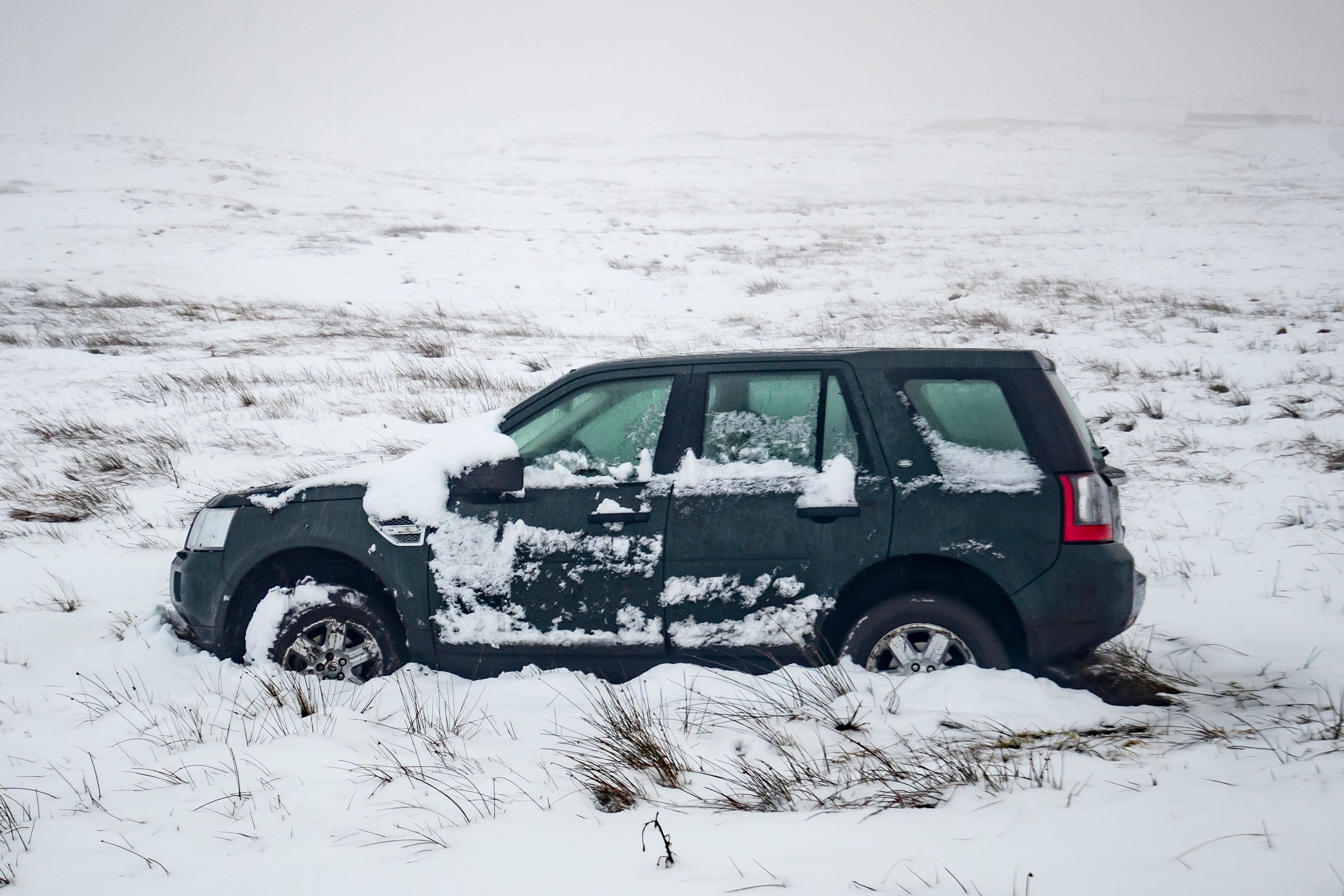Millions of drivers would still get behind the wheel despite heavy snow – survey
The RAC, which commissioned the poll, warned that driving during extreme weather ‘can carry huge risks’.

Your support helps us to tell the story
From reproductive rights to climate change to Big Tech, The Independent is on the ground when the story is developing. Whether it's investigating the financials of Elon Musk's pro-Trump PAC or producing our latest documentary, 'The A Word', which shines a light on the American women fighting for reproductive rights, we know how important it is to parse out the facts from the messaging.
At such a critical moment in US history, we need reporters on the ground. Your donation allows us to keep sending journalists to speak to both sides of the story.
The Independent is trusted by Americans across the entire political spectrum. And unlike many other quality news outlets, we choose not to lock Americans out of our reporting and analysis with paywalls. We believe quality journalism should be available to everyone, paid for by those who can afford it.
Your support makes all the difference.Nearly two our of five (39%) motorists would still get behind the wheel regardless of the amount of snow on the roads, new research suggests.
The RAC, which commissioned the survey, warned that driving during extreme weather “can carry huge risks”.
Some 29% of respondents in the poll of 2,300 drivers admitted scaring themselves after losing control of their vehicle in snow.
Weather warnings for snow have been issued for large parts of the UK on Thursday.
It’s vitally important drivers follow guidance from the Met Office
The RAC is advising motorists to check their vehicles and adjust their driving style during the current cold snap, and not take any risks that put themselves and their passengers in danger.
Half (51%) of those surveyed said their local authority is “very good” or “good” at spreading salt on roads ahead of icy nights, while 36% rated it “fair” and 12% labelled it “poor”.
RAC breakdown spokesman Rod Dennis said: “The vast majority of drivers are heavily reliant on their cars, something that’s exacerbated when the weather turns icy or snowy, especially if public transport is impacted and drivers have no choice but to use their cars for trips they consider essential.
“Doing so can carry huge risks however, and it’s vitally important drivers follow guidance from the Met Office and others accordingly whenever there is a warning for severe weather issued – especially if it is an amber or even rare red warning.
“Waiting until conditions improve might well be the safest and best course of action.
“If a driver has made the decision that it is safe to set out in snow and ice, it’s important drivers always check their cars and adjust their driving styles to cope with whatever wintry conditions are thrown at them.
A car’s braking distance can increase by up to 10 times when there’s snow and ice on a road
“A car’s braking distance can increase by up to 10 times when there’s snow and ice on a road, meaning it’s vital to check all tyres have plenty of tread and slow down considerably to reduce the chances of a collision.”
Met Office spokesman Stephen Dixon said: “It’s vital people take precautions to stay safe in severe weather.
“Our weather warnings highlight when people could be impacted by the weather and there are a number of things people can do to minimise disruption, including checking travel plans, ensuring vehicles are safe, as well as making sure your house is prepared for severe weather.
“Winter weather hazards like snow and ice can be particularly impactful on travel conditions, so it’s always best to check the travel advice in your area before setting off on journeys when severe weather is in the forecast.”
– The RAC’s survey was carried out by research company Online95 in January 2023. It was weighted to be nationally representative.